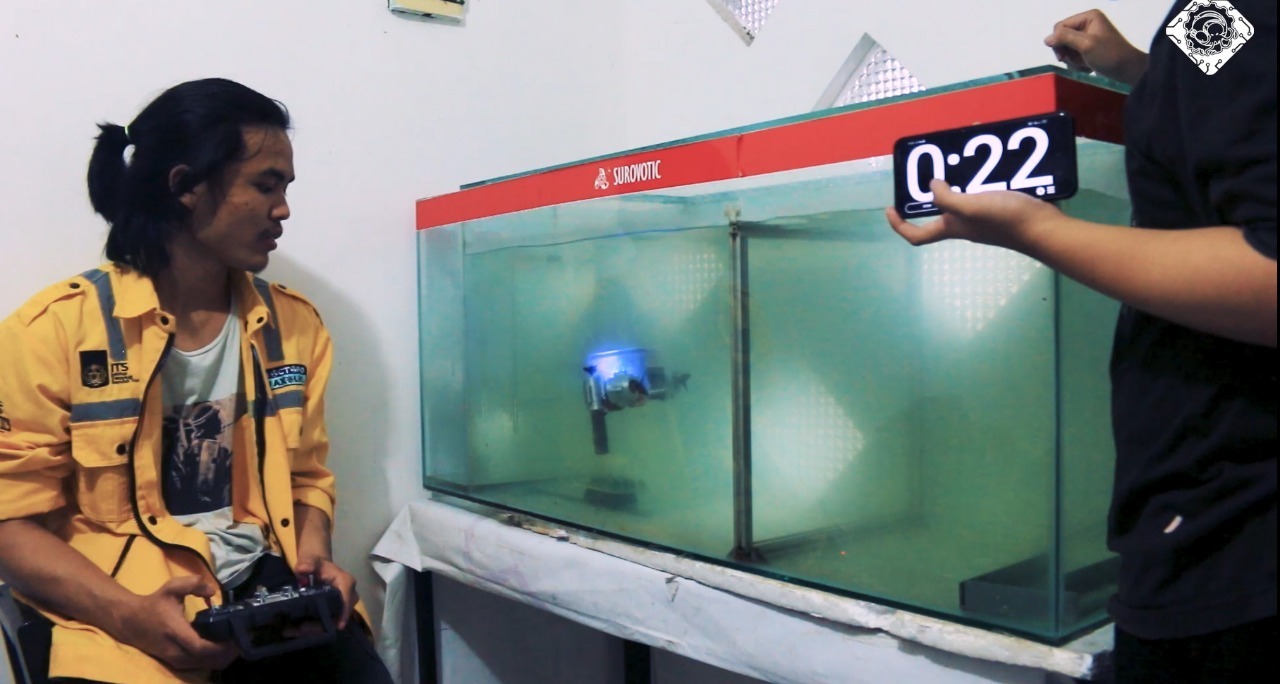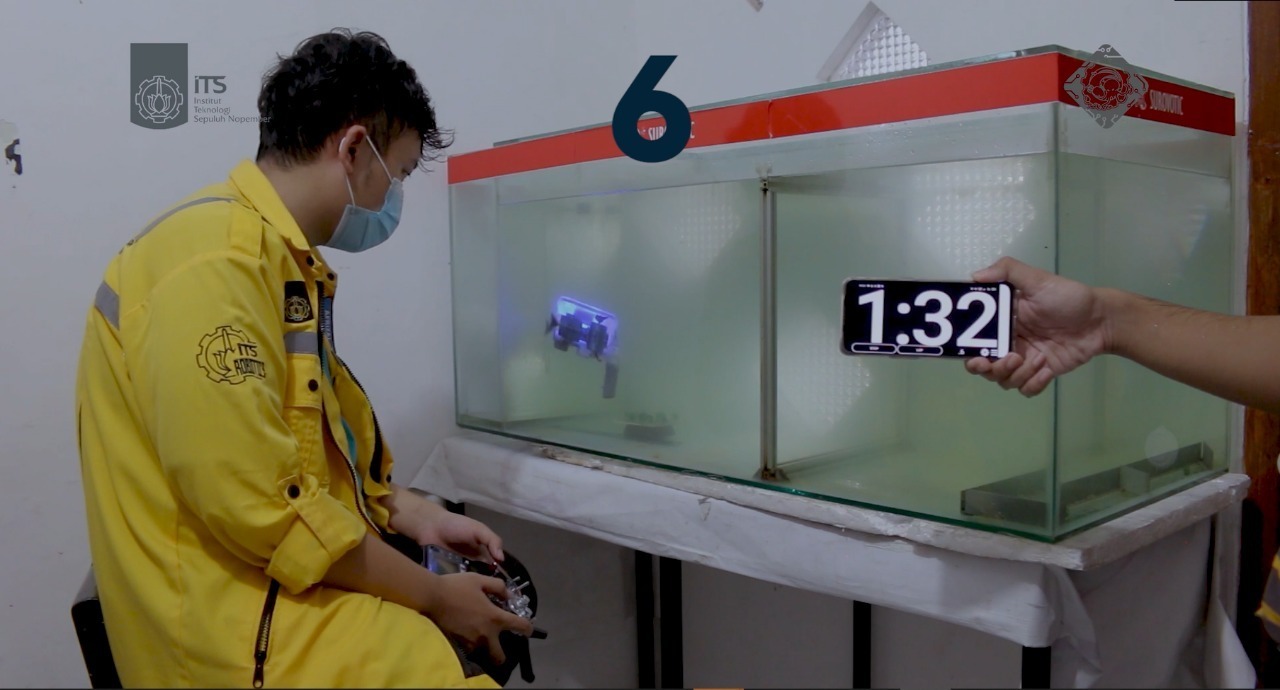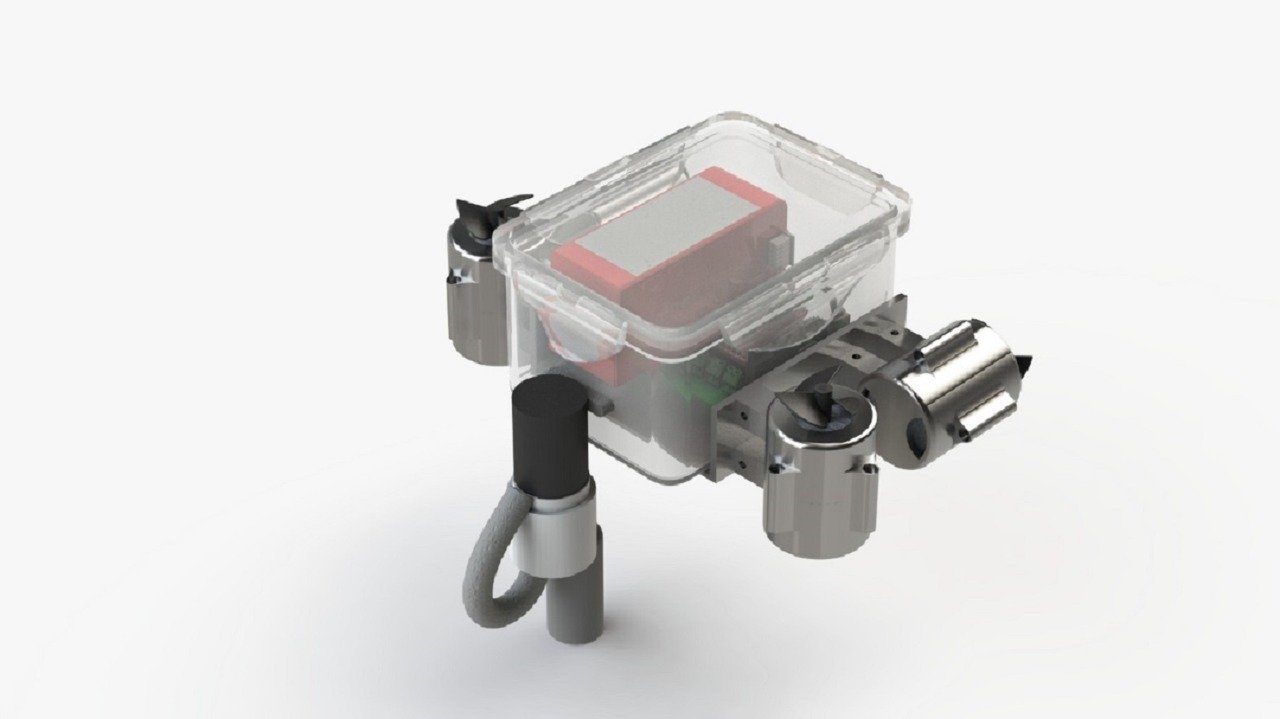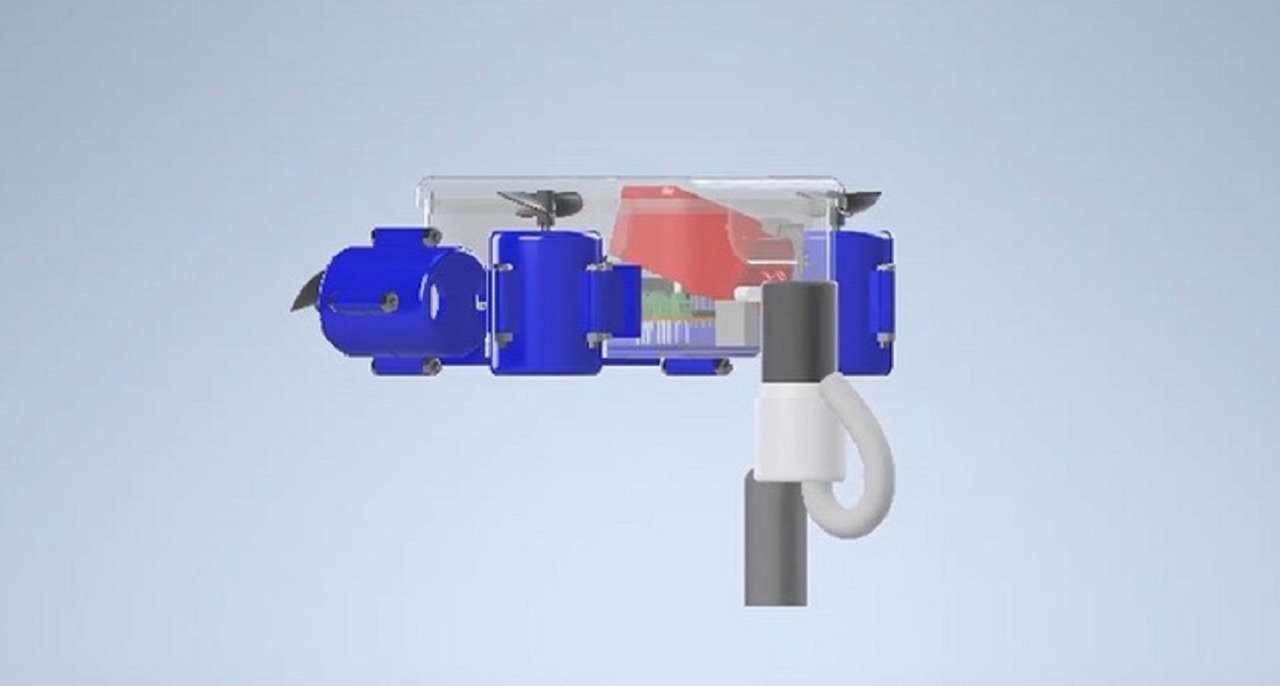Creates New Diving Robots, Banyubramanta ITS Achieves 6 Awards
ITS Campus, ITS News – The robotics team of Institut Teknologi Sepuluh Nopember (ITS), Banyubramanta, again creates innovations in Remotely Operated Vehicle (ROV) robots. This underwater diving robot designed by Banyubramanta achieved six award categories at once on the national Underwater Robot Challenge – Wonderfull Indonesia Robot Challenge (WIRC) 2021 , some time ago.

Sea Wasp Robot from the ITS Banyubramanta Team moving marbles inside an aquarium during the demo.
General Manager of the ITS Banyubramanta Team for the 2021-2022 period, Afrizal Pradana Firmansyah, explained that there were two kinds of robots, namely the Sea Wasp robot and the Glaucus Atlanticus robot. A different sub-team holds each robot. The Sea Wasp robot has a more extensive dimension specification than the Glaucus Atlanticus robot.
The 3D design software used is also different. The Sea Wasp robot uses Solid Works, while Glaucus Atlanticus uses Autodesk Inventor. “In essence, the two sub-teams carry the concept of an underwater robot with different frame designs, PCB circuits, and robot dimensions,” he explained.
Afrizal said that overall the mini ROV robots designed have the same way of working. The second robot can be controlled using a remote wireless system with a motor and propeller ( propeller ).

Glaucus Atlanticus Robot moving marbles inside an aquarium during the demo
Technically, the signal from the remote user will be received by the receiver and processed by the microcontroller, programming logic, and electronic components, including Arduino, Voltage Regulator, Integrated Circuit (IC), motor driver, and battery.
Then the microcontroller will instruct the motor driver to drive the motor. So that the robot can move as desired by the user, such as forward, backward, turn right, turn left, and even turn. “In addition, the team can run the robot’s capabilities underwater to a depth of 30-50 centimeters,” said the student from Pasuruan.
Due to the current mobility demands, he continued, both robots were designed with a waterproof design to protect their electronic components. In this case, the team used a plastic food container as the body of the robot. Furthermore, there is a 3D printed part for the body frame, which functions as a place for the robot’s motor, which is located on the outside of the body.
“The front part of the robot is also equipped with a DC pump motor that is useful for missions at the WIRC event, such as taking and moving marbles as underwater objects,” said the Department of Electrical Engineering student.

3D view of the Sea Wasp robot design from the ITS Banyubramanta Team
Afrizal said that the uniqueness of the robot carried by the Banyubramanta team is in its ability to suck underwater objects. In addition to completing the race mission, these two robots can also be used as prototypes for underwater garbage suction robots, seeing that there is still a lot of garbage in seawater that can damage marine ecosystems.
Not only that, this robot uses its 3D print design for the frame on the robot body, a self-assembled DC pump motor with supporting components, and a simple electronic design to make it easier to replace parts in the event of troubleshooting. “This type of robot has existed before, but at ITS itself, there has been no mini ROV robot that has been competed outside campus, so our team took the initiative to make it,” added the young man who was born March 15, 2000.
Robots that take the basis of the agile and dangerous animals in the ocean will continue to be developed and evaluated from their shortcomings. To be better, Afrizal further said that research would be formed on waterproof components from fiber or similar materials, also using electronic components that are much better so that they can last longer in water.

3D view of the Glaucus Atlanticus robot design created by the ITS Banyubramanta Team
Competing in a national-scale event in early September, the Sea Wasp robot managed to win all categories. Namely, the types of Running ROV, People Choice, Most Popular Video, Most Education Value, Community Awareness, and Community Building. For sub-team 2, the Glaucus Atlanticus robot received an award in the Community Awareness category. “This is an increase from last year, which only brought home one award,” said Afrizal.
This class of 2018 student hopes that the Banyubramanta team will continue developing robot research every year, both in terms of technical aspects and the technology used. “Hopefully, in the future, we can win all competitions that are followed and bring the good name of the ITS campus in front of national and international,” he said hopefully. (nadh/ITS Public Relations)
Reporter: Fatima Az Zahra
Related News
-
Gains Up 300 Percent, ITS Targets Increase in Scholarship Recipients
ITS Campus, ITS News – In the period 2020 – 2023, the scholarship disbursement budget collected by Institut Teknologi
September 17, 2021 21:09 -
Gains Up 300 Percent, ITS Targets Increase in Scholarship Recipients
ITS Campus, ITS News – In the period 2020 – 2023, the scholarship disbursement budget collected by Institut Teknologi
September 17, 2021 21:09 -
ITS students attend an international oil and gas conference in Saudi Arabia
ITS Campus, ITS News – Students from the Department of Ship Systems Engineering at Institut Teknologi Sepuluh Nopember (ITS)
September 17, 2021 21:09 -
ITS students attend an international oil and gas conference in Saudi Arabia
ITS Campus, ITS News – Students from the Department of Marine Engineering at Institut Teknologi Sepuluh Nopember (ITS) became
September 17, 2021 21:09
